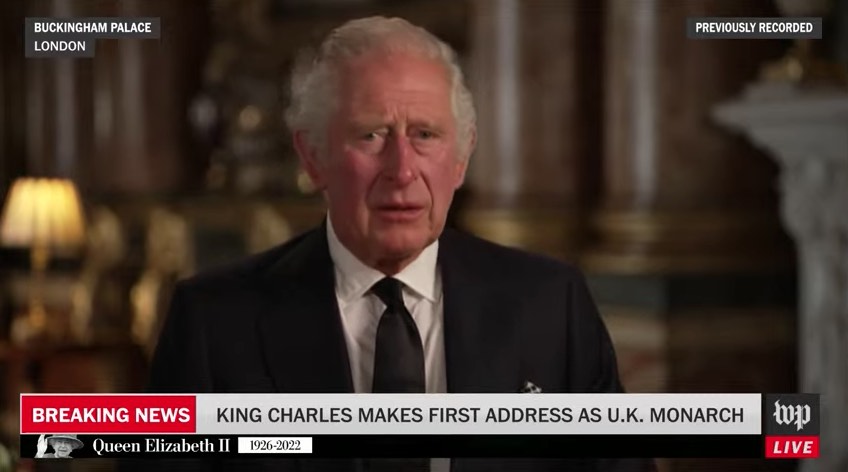how a king sounds

I just heard the first address from King Charles. There's a lot to note here, but I'd like to just focus on the superb sound design from the BBC studios engineers and producers. Man! They knocked it out of the park.
Charles sits in a parlor, lit perfectly well but not harshly, his suit and skin tones perfectly standing out from a gracious, blurred background. That's how it looks, and that's exactly how it sounds too.
To start with, they've placed the mics so that you hear just the right amount of room. His voice bounces around that large palace room and gives you the sense of space. But, crucially, not too much. He's right there in front of you, talking to you as a colleague. The room undoubtedly sounds somewhat boomy, but they've toned it down so that it's just barely there.
Then notice the flesh tones in his voice. Now, granted, we're talking about a Prince with a lifetime of training in public speech, and a well-honed instrument. His voice really is magnificent. It's everything you want from a king. But do you know how hard it is to get something to sound like itself? Sound engineering is incredibly tricky. They've captured his voice with real clarity. The rich midrange, the Ss and Ts and Ks that articulate without grating, that deep baritone, almost bass, that he dips into at the ends of sentences. All perfectly modulated, just enough, never too much.
I especially like the human touches they get right. Sometimes between sentences you close your mouth and then open it again with a bit of tongue and very slight intake of breath: you could spell it "mth". Now most of the time we get rid of that (through distance or level), because if done wrong it can be nauseating. You've probably heard some local radio DJ at some point who got too close to the mic and you heard those awful mouth noises. Getting rid of it is ok, and we wouldn't have noticed or minded —– but what a great decision to mic closely enough to catch them. Yes, he's a king, but he's a human being sitting there with you, with a mouth and teeth. He's breathing. He's real. Just listen to any minute or so of this address, and you'll hear what I'm talking about. The editors (there are indeed cuts in this prerecorded address) have wisely left in some pauses and deep breaths and hesitations, for the same reason. And, again, just the right amount.
One of the most striking examples of the human touch comes near the end, when he says "to lay my beloved mother to rest." At the end of the word rest, he marries sound and sense by exhaling distinctly. The sensitive microphones catch it perfectly.
Most of us have no idea the level of craftsmanship this thing takes: the chain of compressors and limiters, making sounds softer and louder as they cross different thresholds, the balance of low and middle and high frequencies, the incredible care in microphone placement.
Hats off to the sound people, and hats off to the producers and directors who let them do their job well.

Comments